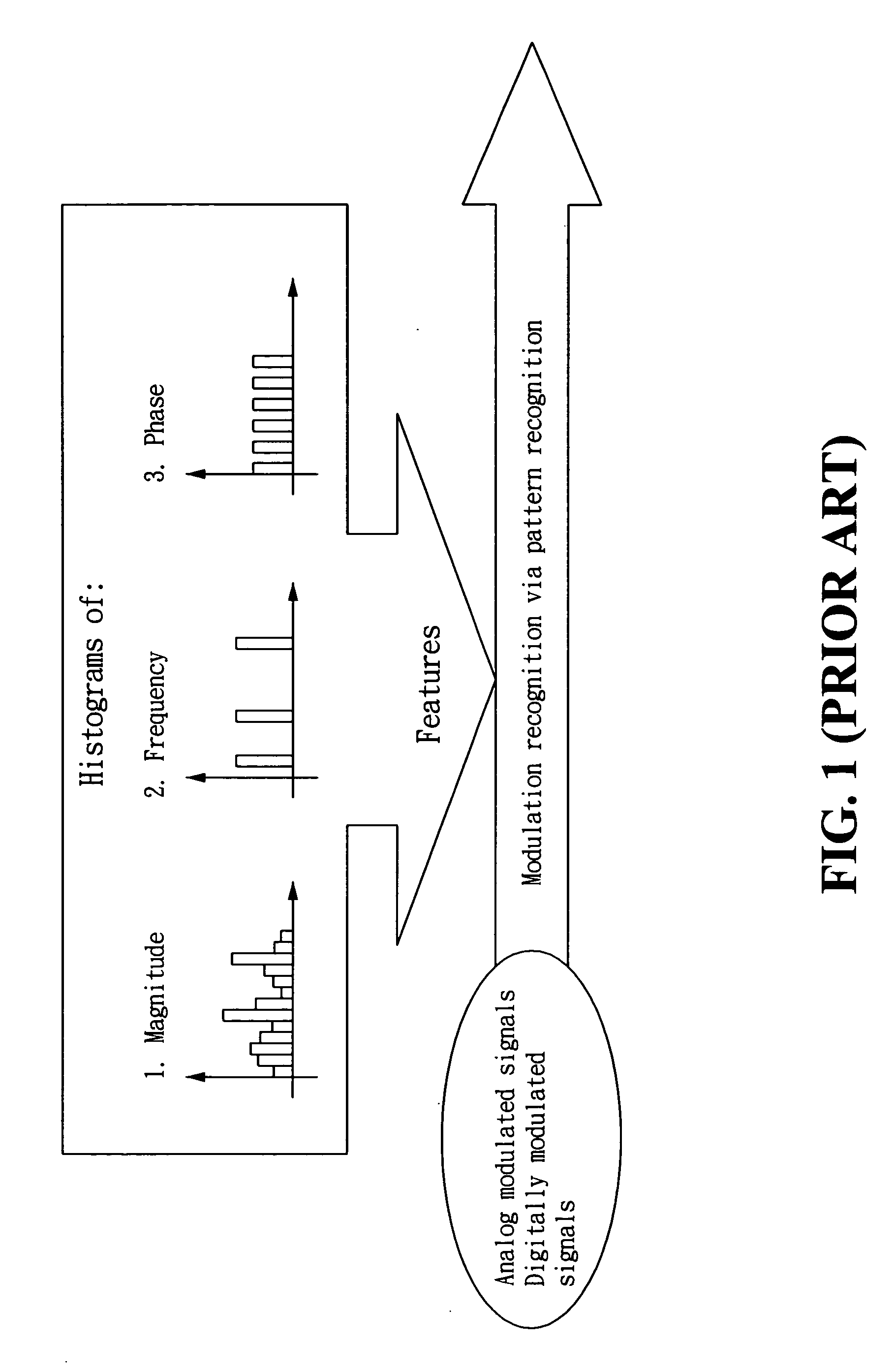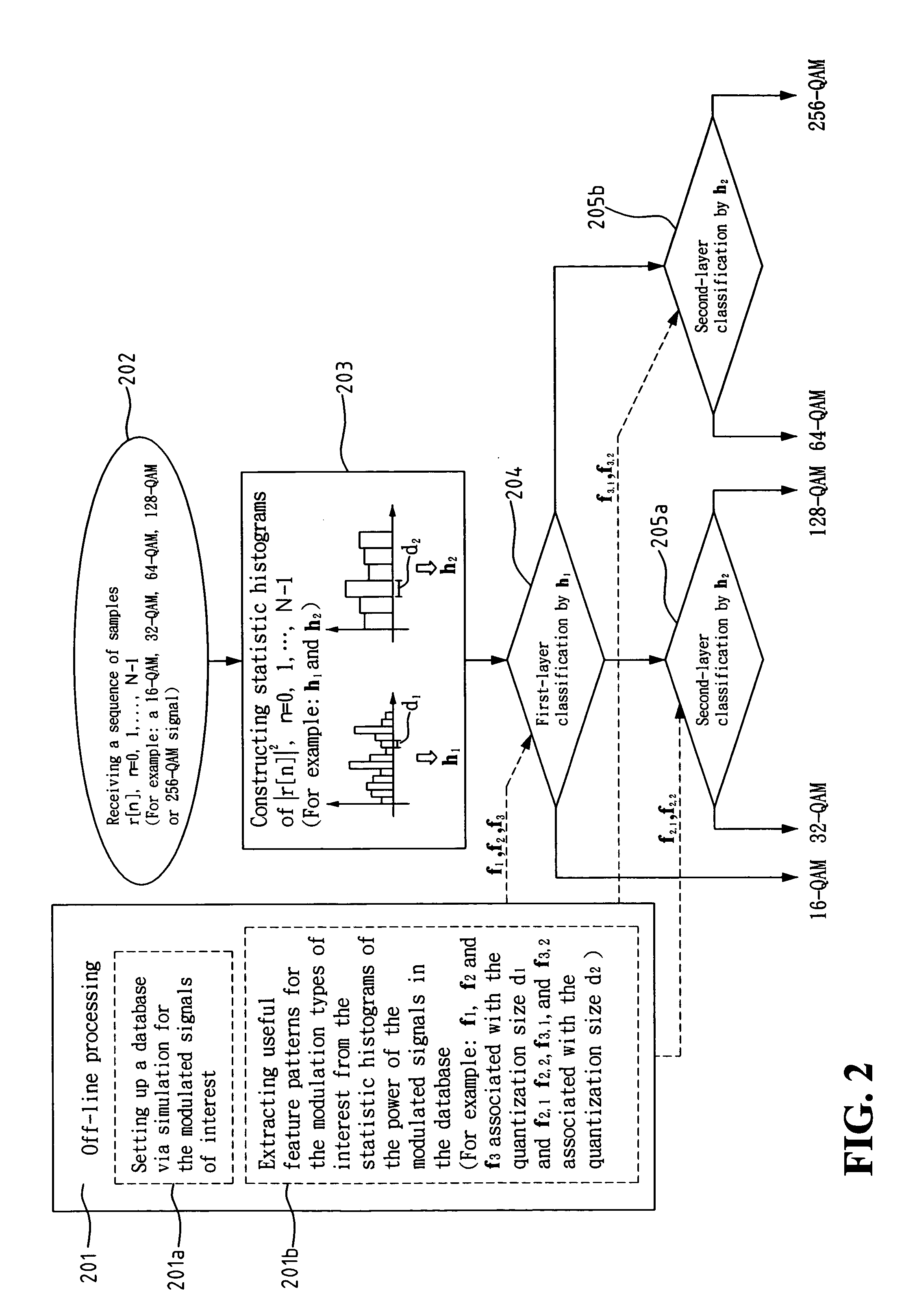Method and device for modulation recognition of digitally modulated signals with multi-level magnitudes
a modulation recognition and multi-level technology, applied in multiple modulation transmitter/receiver arrangements, adaptive control, instruments, etc., can solve the problems of inability to easily discern the differences between the features of qam signals for different levels, the performance of the modulation recognition is sensitive to phase error, and the recognition of qam signals with different levels is far more difficult than that of digitally modulated signals. achieve the effect of improving the reliability of modulation recognition
- Summary
- Abstract
- Description
- Claims
- Application Information
AI Technical Summary
Benefits of technology
Problems solved by technology
Method used
Image
Examples
first embodiment
[0025] To reduce the probability of erroneous recognition and classification, the present invention uses at least two feature patterns based on the distribution of quantized constellation power levels, and collaborates with a classification method to achieve the modulation recognition. Accordingly, at least one quantization size is selected and at least one statistic histogram for the power level's distribution of the object signal is built. FIG. 2 shows a flowchart for the modulation recognition method according to the present invention. For easy explanation and without loss of generality, the modulation types of the object signal to be recognized include 16-QAM, 32-QAM, 64-QAM, 128-QAM and 256-QAM as shown in FIG. 2.
[0026] In the embodiment of FIG. 2, two quantization sizes, d1 and d2, are used. At the first step 201 in FIG. 2, an off-line processing is set up in order to establish the database of the modulated signals of interest and extract some useful features for each modulati...
second embodiment
[0036]FIG. 5 shows a flowchart for another embodiment of the present invention, in which the upper-layer classification uses a threshold decision to check the confidence in the reliability for the modulation recognition. In FIG. 5, the second-layer classification further includes a step of confidence check 505 to enhance the reliability for the modulation recognition before deciding the modulation type of the object signal. The second-layer classification uses a predetermined threshold λ and checks the confidence via threshold decision. If the difference between two inner product outputs (for example, c2,1 and c2,2) is less than the predetermined threshold λ, then more data from the object signal are requested for enhancing the reliability of the modulation recognition, as illustrated in FIG. 5. The predetermined threshold λ is dependent on the modulation type to be recognized.
[0037] In the invention, the parameters of quantization sizes and the number of required layers in the hier...
PUM
 Login to View More
Login to View More Abstract
Description
Claims
Application Information
 Login to View More
Login to View More - R&D
- Intellectual Property
- Life Sciences
- Materials
- Tech Scout
- Unparalleled Data Quality
- Higher Quality Content
- 60% Fewer Hallucinations
Browse by: Latest US Patents, China's latest patents, Technical Efficacy Thesaurus, Application Domain, Technology Topic, Popular Technical Reports.
© 2025 PatSnap. All rights reserved.Legal|Privacy policy|Modern Slavery Act Transparency Statement|Sitemap|About US| Contact US: help@patsnap.com



